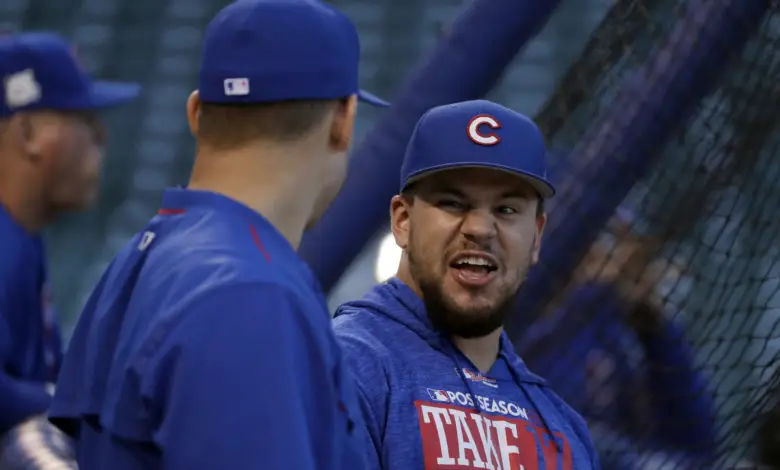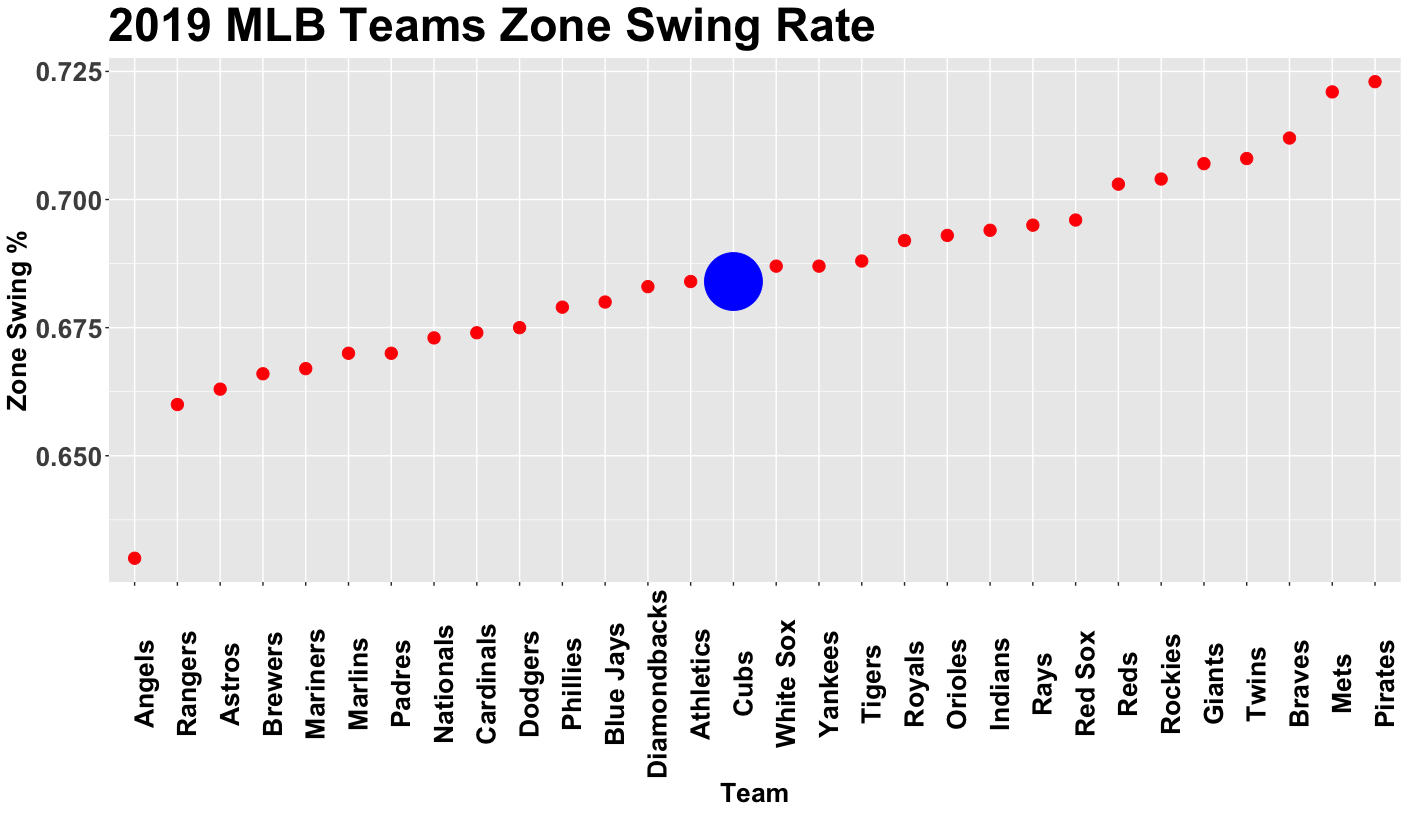
Cubs Stats to Follow: Passive Offense Taking Fewer Swings at Good Pitches
This Cubs offense has been searching for consistency ever since they started shuffling coaching staffs in 2017. They’ve tried to establish a stronger foundation with a hitting infrastructure centered around Justin Stone’s biotech, but those results aren’t going to be seen overnight.
Many hitters on their current roster have revamped their approaches over the years to achieve better results. Kris Bryant exhibited a heightened focus on contact, Javy Báez worked to quiet his pre-pitch movement, and Willson Contreras made changes in his stride by implementing a toe-tap. This year, however, the offense as a whole appears to be transitioning towards an extremely passive approach.
In 2019, the Cubs were swinging at pitches inside the strike zone (68.4%) at a frequency that was right in line with the MLB average (68.5%). The most passive team last season was the Los Angeles Angels of Anaheim (63.0%), followed by the Texas Rangers (66.0%) and Houston Astros (67.3%).

But so far this season, the Cubs have dropped their team-wide zone swing rate from to 62.2%, which is dead last in the National League and bordering the Angels’ 61.5% rate. The Cubs’ current zone swing rate would’ve qualified as the lowest in MLB last season.

The sudden shift in plate approach is jarring because this lineup looks nearly identical to what the Cubs were using last season. Hitters who had previously abided by a selectively aggressive philosophy have now reverted to flat-out passivity.
Anthony Rizzo’s 52% in-zone swing rate, for example, is down nearly 15 percentage points from last season and is now fourth-lowest in MLB. Kyle Schwarber (59.9%) is down nearly 10 percentage points. Even the free-swinging Baez, whose 71.4% Z-Swing leads the team, is watching pitches he typically mashed last season.

The Cubs offense has inexplicably disappeared at times throughout the past four seasons, often because their swing-and-miss sluggers are especially susceptible to heavy breaking stuff. Perhaps this trend toward lower zone swing rate is an attempt to limit the variability they’ve shown throughout past seasons. If that’s the case, all they’ve managed to do is leave us scratching our heads for new and equally frustrating reasons.

